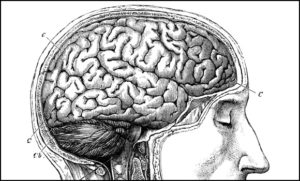
We join spokes together in a wheel,
but it is the centre hole
that makes the wagon move.
We shape clay into a pot,
but it is the emptiness inside
that holds whatever we want.
We hammer wood for a house,
but it is the inner space
that makes it livable.
[from, Tao Te Ching, trans, Stephen Mitchell]
Where is the mind? I can’t find it! It is not that there are no thoughts or feelings or perceptions, but I can find no container for these experiences, no vessel into which, or out of which, they pour; or no pipe through which they flow. There is no fixed entity which somehow holds all these phenomena. There is only the fluid process of minding – without limits or boundaries. Likewise, with the ‘self’ – we can see that if we try to find the self we see that it has no fixed substance or form – it is as fluid and indefinable as mind.
“[According to the Dalai Lama] The mind is described as constantly changing, like … a waterfall gushing down a cliff with no single drop of water remaining in the same position for more than a moment….” [from: Mind in the Views of Buddhism and Cognitive Sciences, by Ming Lee – online at: http://journal.uwest.edu/index.php/hljhb/issue/view/8]
Buddhism tends to consider mind in terms of two main aspects: the discursive, acquisitive or dualistic mind; and, Buddha mind, ‘no-mind’, Beginner’s mind, etc. Much of the time we identify with our discursive mind (what Jon Kabat-Zinn calls the ‘ruminative’ mind, often referred to as ‘monkey mind’ or ‘washing machine mind’) – the stream of chattering, judging, analysing and commenting, over which we seem to have so little control. We assume that this is what the mind is, and that this is who we are. But this is only one aspect of our mind, one state of mind, and however important it may seem to be, it is not the sum total of our being.
In Zen Buddhism, there is a term, mu-shin [wu-hsin, in Chinese], that refers to ‘mind without mind’ or ‘no-mindedness’ – mind not fixed on any thought or object, not dwelling, non-attached – mind at one with the ever-changing fluid universe – Buddha mind or beginner’s mind. It is the experience of this fluid, non-centred, non-clinging, open mind that mindful meditation cultivates.
A contemporary Buddhist psychologist describes four aspects to mind as experienced in mindful meditation: 1. “I am the thinking mind” – the meditator identifies with his, or her, thoughts and mental processes – “I am my thinking mind”; 2. “I am not the mind” – the meditator, in observing the flow of mental processes, realises that they can stand aside from the flow and therefore, “I cannot be my thinking mind”; 3. “no-mind” – when all thoughts and mental activity dissolve as they arise, when there is no more compulsive clinging or hanging-on, and the mind becomes non-attached, clear and at peace – the chattering mind grows quiet – the meditator experiences “no-mind” or “Buddha mind”; 4. “no-self” – with the experience of no-mind, the meditator also seems to dissolve and evaporate – there is only the experience of presence, of being-in-the-moment, without any distinctions and divisions between things or between self and the world: this is the experience of “no-self” or “non-self”. [from: Psychological attachment, no-self and Chan Buddhist Mind Therapy, by Wing-shing Chan, in Contemporary Buddhism Journal, Vol.9, No.2, Nov.2008, p.253-264]
“It should be noted that the Buddha in his original teachings… did not elaborate a sophisticated system of levels of consciousness and associated mental factors, as vigorously discussed and debated among the philosophers of the sectarian Buddhist schools and the Mahayana Schools.” [from: Mind in the Views of Buddhism and Cognitive Sciences]
Descriptions of levels of consciousness and stages of practice, including storehouse/seed analogies (for instance, in The Avatamsaka, or Flower Ornament, Sutra – composed c.500 years after the Buddha died) seem to be later developments of Buddhist practice.
In most schools of Buddhism, mind and body are considered to be inseparable. Dogen uses the term, shin-jin – referring to “body-mind”, or embodied mind. According to Dogen, the human body, isn’t a hindrance to the realisation of enlightenment, but the vehicle through which enlightenment is realised. There is no hint here of the separating of body and mind, or the tendency of, for instance, some Christian thinkers to marginalise the body, or even to consider the body as something to be overcome or subjugated in order to become closer to God.
Not only does Dogen consider the body-mind to be an integrated whole, but he also recognises no essential separation between body-mind, shin-jin, and the world. Hence, Dogen’s reference to the ancient Buddhist belief that, “the entire universe is the true human body. The entire universe is the gate of liberation”. For Dogen, the world and body-mind are co-dependent (pratītyasamutpāda) and permeable. There is no fixed boundary between them. The body-mind is interwoven with the entire universe. The body-mind is a porous field of interpenetrating causal networks, a mingling of currents of being and awakening, a boundless site or clearing in which realisation can occur.
Beginner’s mind (shoshin, in Japanese) – a term associated with Shunryu Suzuki, a Japanese Soto Zen teacher: “Beginner’s mind is original mind… original mind includes everything within itself… it is always ready for anything… it is open to everything… if we discriminate too much, become demanding and acquisitive we lose our beginner’s mind – in the beginner’s mind there are many possibilities; in the expert’s mind there are few.”
Don’t-know mind – a term associated with Seung Sahn, a Korean Zen teacher: “throw away all opinions, all likes and dislikes, only keep the mind that doesn’t know… the mind before thinking, before words…. At one with the universe.”
So, Buddha mind, actual mind, is non-discriminating, undivided, non-clinging, free-flowing, open to everything that arises – dwelling nowhere, present everywhere – being here mind.
